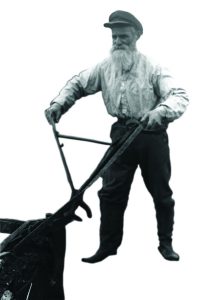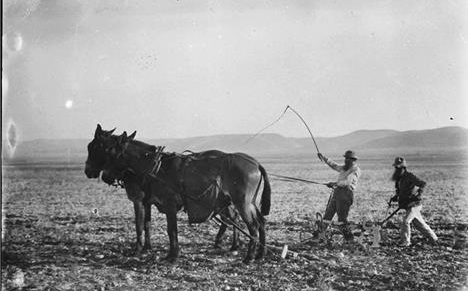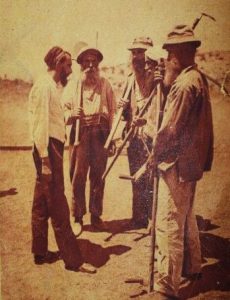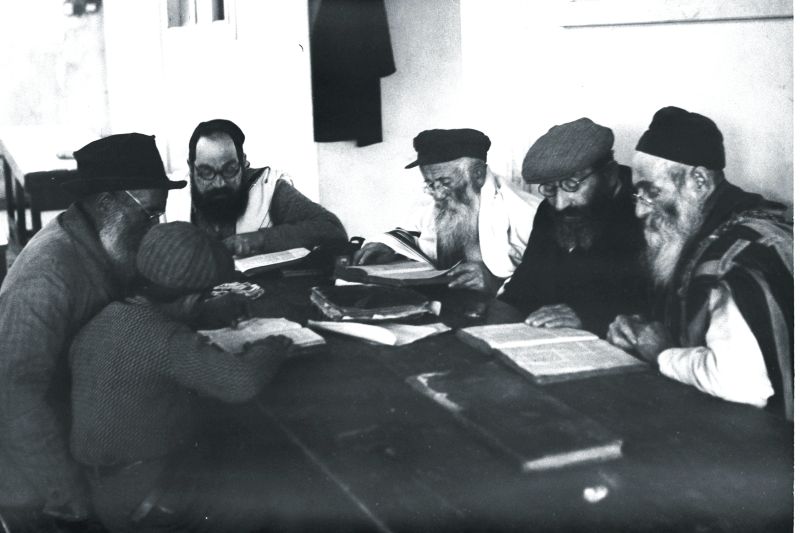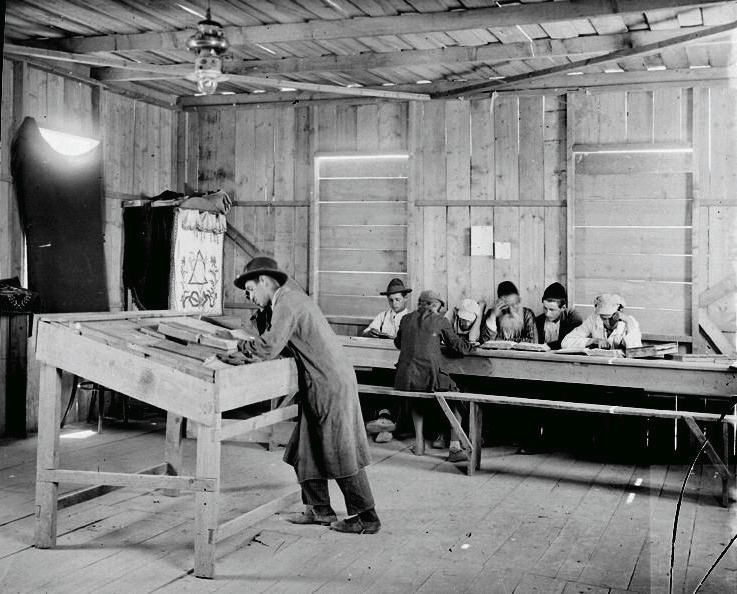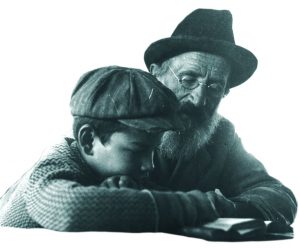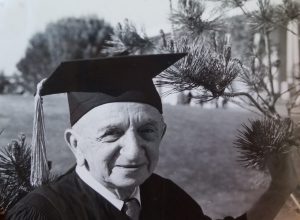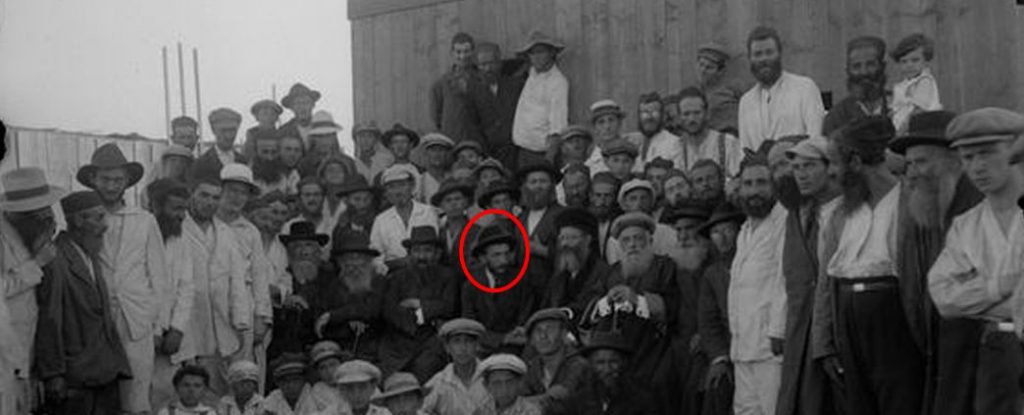Where to?
Unique ultra-Orthodox pioneer village at the foot of Carmel Mountains
The Masters’ Journey
Every good story of pioneer Zionism has its share of swamps, malaria, and Arab marauders – and preferably a few of Baron Rothschild’s corrupt clerks thrown in for good measure. The standard elements of an authentic Hasidic tale, on the other hand, are a revered Hasidic master, a bottle of schnapps, and an unexpected stopover due to a cart breakdown. This column, however, is about to deliver a double whammy – an all-in-one account including everything but the Baron’s clerks (whom we’ve recently had enough of anyway).
Our tale begins in 1924, when most Jewish immigrants to Mandate Palestine were fleeing Poland’s economic downturn and increasing anti-Semitism. Two Hasidic groups decided independently to join them. Though an American crackdown on immigration had closed the doors of the Goldene Medina to these Hasidim, their somewhat atypical move to the Holy Land was also driven by their charismatic leaders: Rabbi Yisroel Elozor Hopsztajn of Kozienice (Kozhnitz in Yiddish), a sixth-generation descendant of the Maggid of Kozhnitz, for whom he was named; and Rabbi Yehezkel Taub of Jabłonna, descended from Rabbi Yehezkel of Kazimierz Dolny (Kuzmir), whose lineage traced all the way back to the biblical Abraham.
Both rebbes were profoundly influenced by the Zionist teachings of Rabbi Yeshayahu Shapira, brother of the famed Kalonymus Kalman Shapira, the Piaseczno Rebbe, whose sermons miraculously survived the Warsaw Ghetto. Apart from a genealogy going back to Adam (by way of Rebbe Elimelech of Grodzisk), Rabbi Yeshayahu was distinguished by his fervent Zionism. A disciple of Abraham Isaac Hakohen Kook, Shapira was even known as the “Pioneer Rebbe” (see “By the By,” p. XX). This mutual mentor persuaded Taub and Hopsztajn that Polish anti-Semitism, already rampant following World War I, would only intensify, and that the Holy Land was a legitimate alternative, even if other strains of ultra-Orthodoxy choked on the word Zionism.
Providentially, the two young leaders found themselves on the same boat to Mandate Palestine, armed with funds from their respective communities and seeking a parcel of land for an agricultural settlement wherever God led them. They decided to join forces, and when their ship docked in Jaffa they both embraced the Pioneer Rebbe, Rabbi Shapira, who’d come from Jerusalem to meet them. Together they hired a wagon and bounced along a dirt path to the foot of the Carmel Mountains and the edge of the Zebulun Valley, reputedly the burial place of the biblical hero Barak, sidekick of Deborah the Prophetess.
If this were a classic Hasidic tale, the good rabbis would have then crossed the churning Kishon River over a shaky, narrow bridge, only for their cart to break down in a barren field, signifying from Above that this was their destined abode. The trio would have promptly opened a bottle of schnapps and danced wildly under the open sky amid cries of “Le-haim – to life!”
But the official version of the story tells us only that they purchased land from the local effendi – no mention of cart trouble or liquor. Less than a year later, those same Hasidic masters were back in the same spot, surrounded by eighty families of followers. Overcoming their unpleasant first impressions – along with their second and third – the faithful of Kozienice turned to their right and began building the village of Avodat Israel (Labor of Israel), while the Hasidim from Jabłonna took the opposite hill, which they named Nahalat Yaakov (Jacob’s Inheritance).
Harvest of Hearts
This point in our tale would be the place for heartwarming miracles and wonders, with donkeys leaping gaily about in green fields until a bell clanged, ushering in the Sabbath. No such luck. The Hasidim were beset by malaria, floods, no farming expertise, and – most of all – no cash. Their few achievements were sabotaged by local Arabs, and disappointment was the only bumper crop.
Desperate, they turned to their nearest like-minded Jewish neighbors – the secular farming community of Nahalal. With three years’ experience and a great deal more success, the Jewish farmers were a godsend. This time, reality was as good as the best Hasidic story, as the Davar daily reported:
Around [the Hasidim], crowded together, the people of Nahalal jostled one another – members of the farming cooperative, construction workers, and young men and women from the second group of the Shomer Ha-tza’ir (Young Guard) kibbutz movement then living and working there. The rebbe spoke of revolution and revolutionaries, of the “real thing.” Of Nahalat Yaakov and Nahalal, which had both tried to create something new; of the new culture still in its infancy; and of the mutual influences of the two neighboring villages. Nahalal members described the feelings of brotherhood pulsing in the hearts of all the workers […], and all around them inclined their ears and opened their hearts.
In between the speeches, young and old, girls and children, broke out in mighty bursts of song: “Amkha Yisrael yibaneh – Your people, Israel, shall be built!” And silent lips whispered: “Blessed be He who has restored children’s hearts unto their fathers!” A great melodic roar arose from the hundreds massed there: “Hinei ma tov u-ma na’im shevet ahim gam yahad – how goodly and pleasant for brothers to dwell together.”
With no space in the hall, all poured outside. Beneath the setting moon, hands resting on shoulders, the youth of Nahalal [danced] with the elders from across the way, and the old tune was suddenly filled with a new energy: “Ve-taher libenu l’ovdekha be’emet – purify our hearts to serve You truthfully.” (Haim Shoorer, “Hasidim,” Davar, 17 Elul 5726/September 2, 1966, p. 3 [Hebrew])
Dancing Pioneer Youth
The assistance provided by the Nahalal pioneers helped raise the Orthodox villagers’ spirits. Soon the Hasidim were once again singing and dancing among the furrows, as a poem written by a fourteen-year-old from Nahalat Yaakov attests:
We work, we plow, Hasidim alongside pioneers.
Together we’ll toil, together we’ll dance, together we’ll melodies croon.
Joining forces to build roads, drain swamps, sing songs.
Hasidim, workers, pioneers – united in diligent toil! (ibid.)
This cheerful impression might be put down to youthful exaggeration, but similar recollections were recorded by Hava Shapira of Avodat Yisrael. The pioneeers may have had to eat dust, she wrote, but that couldn’t stop their singing:
The first years were bitterly hard. There was no proper food or drinking water, there were no roads […]. The members worked hard all day, then stood guard at night against Arab attack. Yet there was always joy among us.
The men prayed every morning. Then there was a Talmud class, after which they went out to the fields. Some cleared stones, others drained the swamp water, which came up to our knees in the springtime.
As evening fell, though shattered by the day’s backbreaking labor, they returned with a song on their lips. The members’ wives came out merrily to meet their husbands, serving them the meager fare they’d slaved to prepare from the slim pickings still left in their huts.
After filling their bellies somewhat, the men went back to the prayer house, as it was time for afternoon and evening prayers. They sat for ages, discussing complicated Talmudic passages, and every so often they’d raise their voices in song and praise of the Living God and the Holy Land, whose soil they’d been privileged to till again. (Hava Shapira, “Readers’ Letters,” HaTzofe, 5 Shevat 5724 [January 19, 1964], p. 2)
In the end, however, no Hasidic medley could overcome the harsh conditions, the lack of training, and the economic crisis caused by the Depression, as a result of which donations all but dried up. Starving, the dancing rebbes and their Hasidim offered the Jewish National Fund their land – in exchange for turning their villages into official farming cooperatives under the organization’s wing. JNF administrators duly nationalized the real estate, livestock, and farming equipment, dispatched engineers and agronomists to drain the swamps and provide guidance, and paid the villagers’ considerable debts.
In 1926, the JNF sent those Hasidim unfit for agricultural work back to Poland, replacing them with twenty-five families from the religious Zionist Poel Ha-mizrahi movement, who actually knew how to plow. At the same time, Nahalat Yaakov and Avodat Yisrael merged, becoming Kfar Hasidim (Hasidim Village).
These changes revived the remaining families’ failing efforts. Even the Kozhnitzer Rebbe himself toiled alongside his followers, speeding away in a mule-drawn cart after loading it with hay.
Their movements weren’t too practiced, but swift and full of energy: jackets off, tzitzit (fringes) flying in the breeze. The rebbe took a bale of hay in his arms and placed it behind the mules […]. A former ritual slaughterer declared, “Won’t we soon be as good as Nahalal? Don’t laugh, it’s not impossible! Don’t you know what Hasidic fervor can do when it gets going?”
Two Hasidim were overheard arguing: “Once the harvest is over, we’ll start to plow,” said one. “We’ll be plowing for twenty hours straight!” said one. “The mules won’t be able to cope!” countered the second. (Shoorer)
Much schnapps has been poured since then in Kfar Hasidim, but the place changed a great deal after the State of Israel was established in 1948. Most of the ultra-Orthodox families left for Bnei Brak or Jerusalem. In the 1950s, the town split into Kfar Hasidim A (an agricultural village) and B, which have since reunited.
Little remains today of the pioneering ultra-Orthodox wonder village. Yet residents recently resuscitated the village archive, and last summer a visitors’ center was added, with vintage agricultural implements and local guides to explain the unexpected history these represent.
There’s also a museum, “Yankel’s Shtetl,” offering a taste of Jewish life in pre-Holocaust eastern Europe. Spread over twenty dunams, the museum belongs to Gadi Yaakov, who grew up in Kfar Hasidim. Every item on display is from Yaakov’s personal collection. In addition, he hosts sing-a-longs and other events on the premises. Out comes the accordion, and all assembled link arms and sway to the lilting Yiddish melodies – just like the good old days.
By The Rabbi
Rabbi Yeshayahu Shapira, the Pioneer Rebbe, was a fascinating man whose impeccable Hasidic pedigree didn’t stop him from joining the Mizrahi Labor Zionists. As their chairman, he set up both modern Orthodox and ultra-Orthodox settlements in Israel.
At age fifty-one, Shapira too decided to make his dreams come true, leaving politics behind to till the earth in Kfar Pines, near Hadera. The rabbi set up a Hasidic court in his living room, where he held the traditional tisch (Hasidic meal), teaching melodies he composed. His most famous refrain was the haunting “If only I had the strength, I’d stand up in the marketplace and shout: Today is the Sabbath!”
Shapira’s two sons reflect his eclectic personality: Elimelekh, the elder, led the Grodzisk-Piaseczno Hasidic sect, while Yoske became a government minister on behalf of the National Religious Party.
The Taub Pendulum
The story of Rabbi Yehezkel Taub, the last Hasidic master of Yablona, is utterly fantastic. The complicated financial dealings in which Taub traded his followers’ land for JNF support – apparently without consulting them – forced him to travel the world seeking donations needed to pay back loans and keep Kfar Hasidim going. Arriving in the U.S. in the throes of the Depression, he resolved to stay until he’d somehow raised the necessary funding.
World War II and its aftermath found Taub in Los Angeles. Convinced that he’d sent many of his followers (his own ex-wife included) to their deaths by causing them to return to Poland, he experienced a crisis of faith. Removing his skullcap, beard, and sidelocks, the rabbi changed his name to George T. Nagel and worked his way up to become a successful real estate developer. He retired early due to illness but promptly enrolled in university, even dorming.
After completing a degree and a book on psychology, Taub reluctantly agreed, toward the end of his life, to return anonymously to Kfar Hasidim. Once there, he was astounded to find that most families regarded him as their savior, having delivered them from the cruel fate met by all their relatives in Poland. Reconciled with religion, the ex-Yabloner died in 1986 at age ninety and was buried among the founders of Kfar Hasidim, with all the honor due a Hasidic master.
Handy Info
Where to Eat
Steakhouse
17 Ha-taasiya Street, Nesher
Kosher, meat, (04) 820-1414
Biga Bakery
85 Alonim Street, Kiryat Tivon
Kosher, dairy, (04) 953-6306
Gabo
1 Tziyonut Boulevard, Kiryat Ata
Kosher, meat, (04) 997-4799
Don’t Miss
Kfar Hasidim Archive and Visitors’ Center
By appointment only,
Yair: 054-587-7298, Yael: 050-906-1334
Entrance fee
Yankel’s Shtetl
Entrance fee, group visits by appointment only,
052-448-1481
Nesher Park
Walking trail through Katiya Stream over rope bridges
6 He-haruv Street, Nesher
Free entry
Beth She’arim National Park
Open Mon.–Thurs., 8 am–4 pm,
Fri., 8 am–3 pm (4 pm in the summer)
Entrance fee, (04) 983-1643



